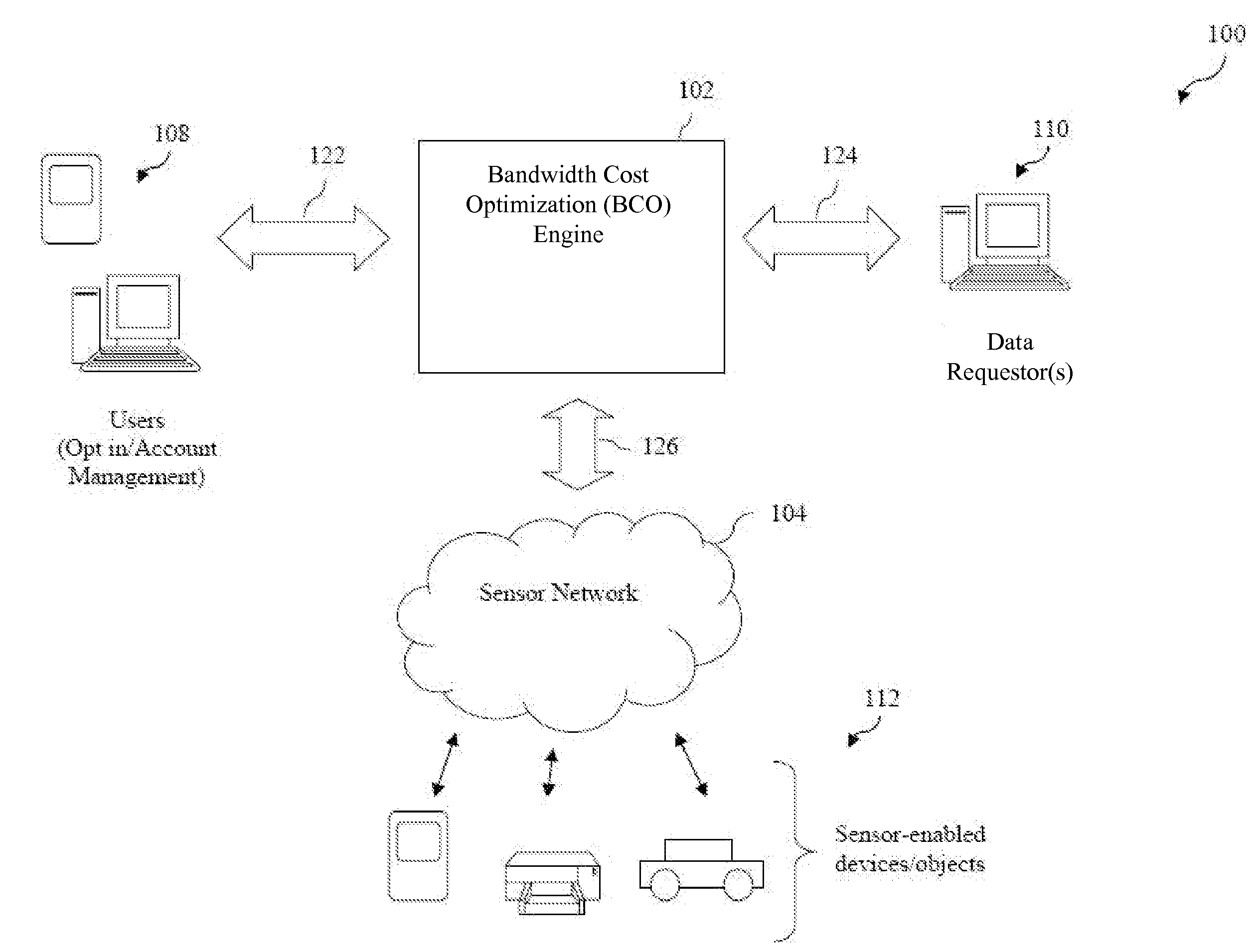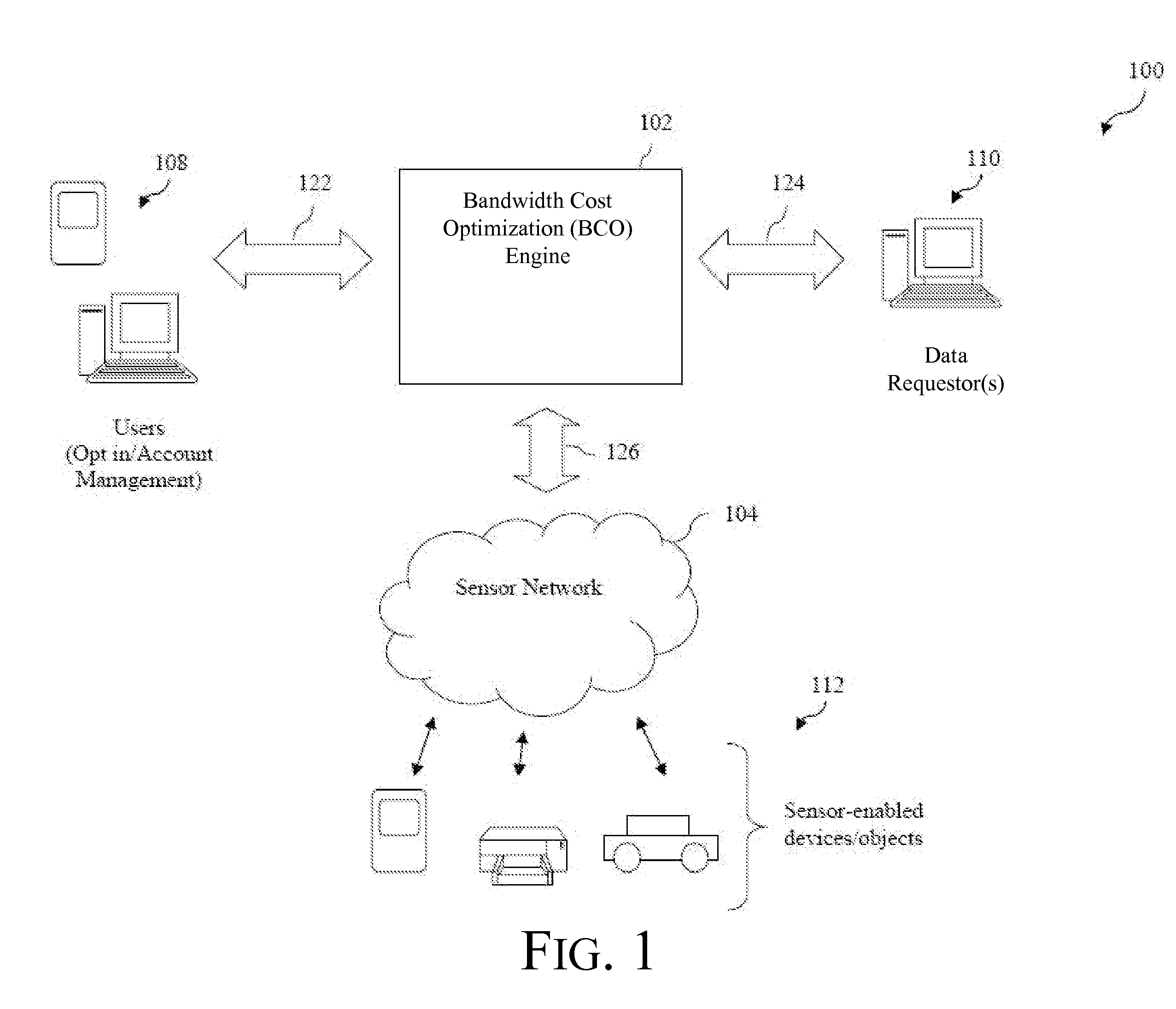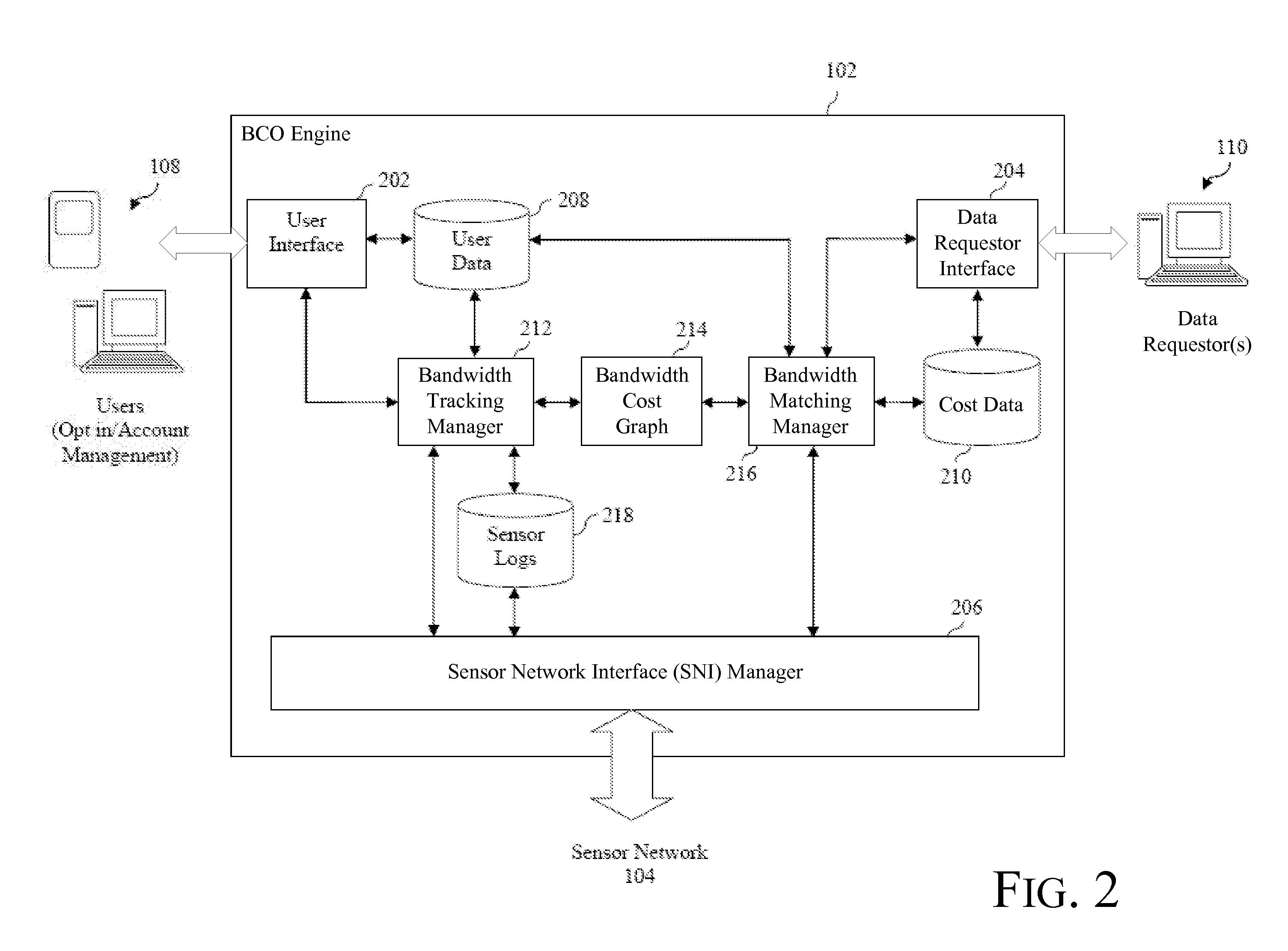[0006]The present disclosure addresses such failings and provides a system and method that can leverage bandwidth information provided by a variety of sensors, sensor-enabled devices and / or objects (a sensor-enabled device and / or object is referred to hereinafter for simplicity as a “sensor”), including sensors associated with different types of networks, and network frequencies and carriers, to generate a
database of real-time
bandwidth availability that can be used for the provisioning of available
bandwidth allocation services. Additionally, a system and method is also needed that intelligently manages the manner in which bandwidth is allocated to sensors so that bandwidth can be optimized and cost can be minimized, at a device /
object level, a
group level, and / or at a
system level.
[0008]In addition and advantageously,
pooling of bandwidth resources and selection of optimal bandwidth resource alternatives can encourage a commoditization of the provision of bandwidth, thus driving the cost of bandwidth resources down and disassociating the exchange of data from the value-added services that are actually requesting the exchange.
Pooling of bandwidth also supports the donation or regular allocation of bandwidth by users to non-profit, school, church,
community, artist or other entity considered deserving of
bandwidth sharing / donation by the user.
[0009]A system and method is described herein for managing bandwidth for a plurality of sensors in an ad hoc network. The system and method leverages information concerning bandwidth requirements and constraints of a group of sensors, e.g., spatially-, temporally-, socially- or topically-
proximate sensors, in the network to make decisions concerning bandwidth on a sensor, group, or
network level. By continuously monitoring the bandwidth needs and status of sensors in the ad hoc network, the system and method can balance the bandwidth needs of the sensors by dynamically and adaptively determining and / or changing the manner in which one or more sensors exchange data, e.g., sensor or
multimedia content data, via the ad hoc network.
[0010]In particular, a method for managing bandwidth in an ad hoc network is described herein. In accordance with the method, sensor data is provided for a plurality of sensors. Sensor data can include, without limitation, bandwidth information, location information, power available,
power consumption rates and history,
user profile, path or other analytics data, social connection, association and topic to person, place, event or thing relation data as produced by users carrying devices and sensors as they move through space and time in their daily lives. An ad hoc network is then constructed among the plurality of sensors based on some or all of the received sensor data. In accordance with one or more embodiments, construction of the ad hoc network is further based on user-specified preferences and requirements. Bandwidth information, e.g., availability, cost, transfer rate, security, amount of available bandwidth, usage, etc., associated with each sensor in the group, in the ad hoc network is then analyzed. Based on the analysis, a manner in which at least one sensor in the group exchanges data is determined. In accordance with one or more embodiments, the manner in which data is exchanged is determined to be the
least cost and fastest
data exchange route given available bandwidth.
[0014]A system is also described herein. The system includes a sensor interface manager, a bandwidth tracking manager, and a
bandwidth management manager. The sensor interface manager is configured to receive sensor data provided from a plurality of sensors. The bandwidth tracking manager is configured to construct an ad hoc network among the plurality of sensors based on some or all of the received sensor data. In accordance with one or more embodiments, the bandwidth tracking manager is configured to construct the ad hoc network based further on user-specified preferences and requirements. The
bandwidth management manager is configured to analyze bandwidth information associated with each sensor in a group in the ad hoc network and to determine a manner in which at least one sensor in the group exchanges data based on the analysis of the bandwidth information. In accordance with one or more embodiments, the manner in which data is exchanged is determined to be the
least cost and fastest
data exchange route given available bandwidth.
[0018]A
computer program product is also described herein. The
computer program product includes a computer-readable medium having
computer program code recorded thereon for enabling a
processing unit to manage bandwidth in an ad hoe network. The computer
program code includes code to enable the
processing unit to receive sensor data provided from a plurality of sensors, construct an ad hoe network among the plurality of sensors based on some or all of the received sensor data, analyze bandwidth information associated with each sensor in a group of sensors in the ad hoc network, and determine the manner in which at least one sensor in the group exchanges data based on the analysis of the bandwidth information. In accordance with one or more embodiments, the manner in which data is exchanged is determined to be the
least cost and fastest data exchange
route given the available bandwidth. In accordance with one or more embodiments, construction of the ad hoc network can be further based on user-specified preferences and requirements.
 Login to View More
Login to View More  Login to View More
Login to View More 


